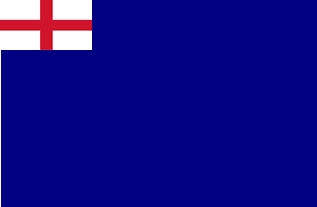Top Qs
Timeline
Chat
Perspective
Irish Squadron
Military unit From Wikipedia, the free encyclopedia
Remove ads
The Irish Squadron [1] originally known as the Irish Fleet [2] was a series of temporary naval formations assembled for specific military campaigns of the English navy and Royal Navy between 1297 and 1731.
Remove ads
History
Summarize
Perspective
From the 13th to 17th centuries, the Irish Squadron was a temporary formation assembled for specific naval campaigns, commanded by a senior officer whose title changed a number of times. It was one of four separate fleets, the other three being the Western, Northern and Aquitaine, each with their own independent commander, until 1406 when they came under the unified command of the High Admiral of England, Ireland and Aquitaine.[3] For most of its existence, the Irish Squadron conducted operations from Milford Haven in Wales, before switching to Greenock, Scotland during the 1680s.[4]
In 1298, Edward I of England appointed Sir William de Leybourne as the first "Admiral of the Irish Sea", responsible for all English ships operating in that area.[5] During the 14th century, the squadron was formed on four occasions, first in 1356 during the reign of Edward III of England to protect troop convoys against Scottish privateers.[6] The other three occasions were in support of expeditions against Ireland ordered by Richard II of England; in 1382 under Sir William Spalding, 1397 under John Beaufort, 1st Earl of Somerset and from January to September 1399 under Thomas Percy, 1st Earl of Worcester.
During the Tudor period, the squadron was re-established for service in the 1539 to 1545 Anglo-Scottish Wars and again during the 1569 to 1583 Desmond Rebellions led by Sir William Wynter, who was ordered to cut off all sea routes into Ireland and seize all ships of the pending papal invasion force.[7] At the start of the First English Civil War in 1642, most of the navy was controlled by Parliament and until 1653 it was known as the "Irish Guard Naval Squadron of Parliament", playing a significant role in the 1649 to 1651 Cromwellian conquest of Ireland.[8] Its strength varied but reached a peak of 56 ships in 1645, making it the second-largest squadron in the navy.[9]
During the Nine Years' War, the squadron fought at the Battle of Bantry Bay in May 1689 under the command of George Rooke who retained his position until early 1690. In June 1690, it took part in the Capture of Waterford led by Rear-Admiral Cloudesley Shovell and in 1691 was part of a larger naval force assembled to transfer King William III to Ireland.[10][11] Reformed in July 1727 and in July 1731, it was gradually reduced in numbers before being disbanded.[12] During the French Revolutionary Wars in 1797, the Royal Navy finally established a permanent naval formation for the Irish Sea known as the Coast of Ireland Station, based in Cork with repair and resupply bases at Kinsale Dockyard.
Remove ads
In command
Summarize
Perspective
Note:Incomplete list of post holders include.
Remove ads
Squadron composition
The Irish Squadron as 1 September 1689.[42]
Footnote
Bibliography
Wikiwand - on
Seamless Wikipedia browsing. On steroids.
Remove ads


